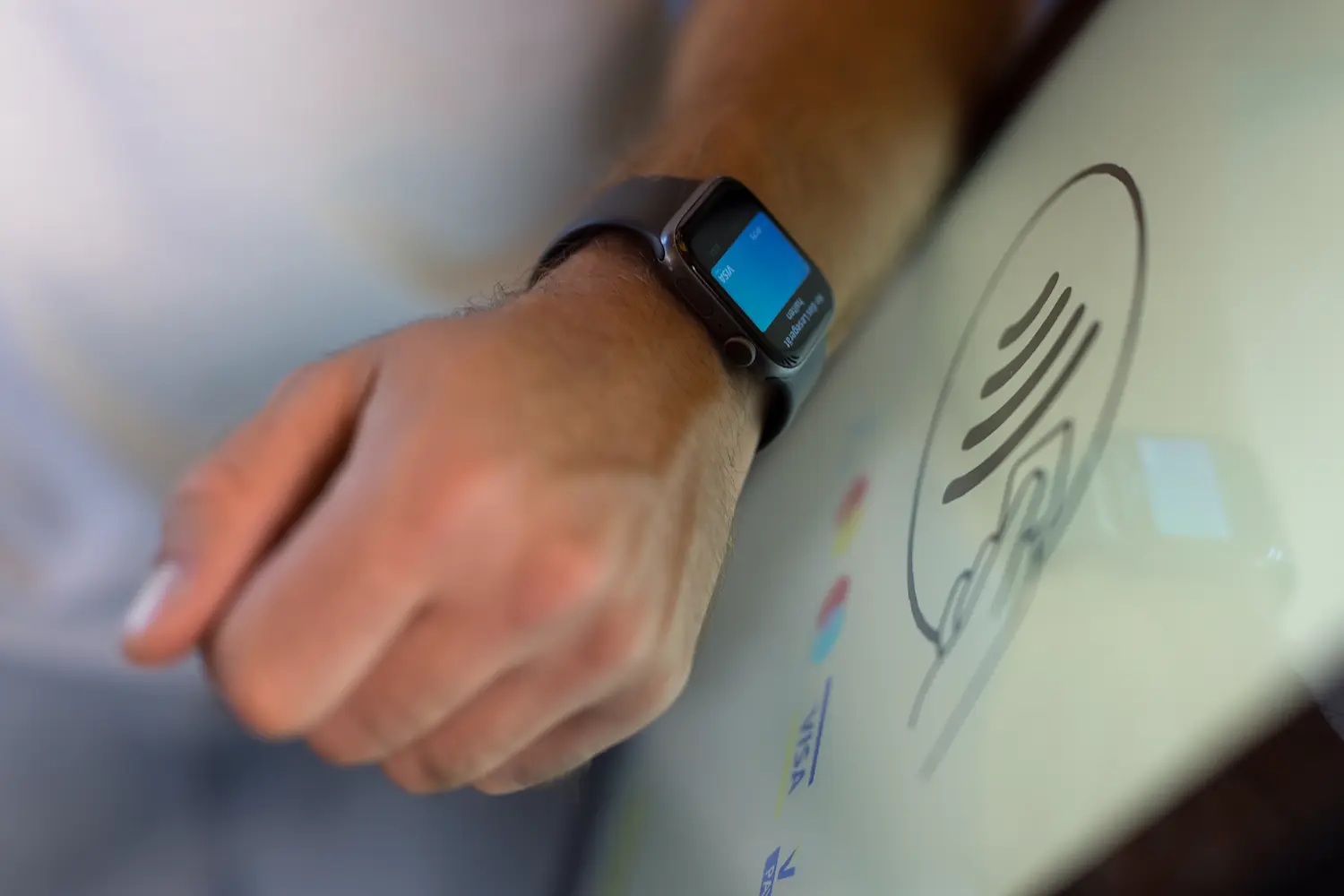Speed of Contactless Payment and Its Efficiency for Businesses
Table of contents:
How Businesses Benefit from the Speed of Contactless Payment- The Technology Behind Contactless Payment
- Benefits of Contactless Payment for Customers
- Efficiency Gains for Businesses
- Applications of Contactless Payment in Various Industries
- Case Studies of Successful Companies (For the client)
- Challenges and Risks
- Partnering with oona
How Businesses Benefit from the Speed of Contactless Payment
Contactless payment methods are fast becoming the norm around the world. The ease and customer benefits they provide, alongside the efficiency gains made by businesses that incorporate this technology, makes implementing it a smart choice. Find out how the speed of contactless payment benefits companies today.
The Technology Behind Contactless Payment
Contactless payments work by holding a contactless card or smart device near a contactless-enabled POS terminal. The close proximity of the two devices enables a wireless transmission of data, which is how a payment is made.
The technology behind this wireless transfer is called near-field communication (NFC) technology. NFC is a wireless technology that is based on radio frequency identification (RFID) technology, which has been around for decades. RFID is used in things such as key cards to access spaces. The difference is NFC only works for short-range transfers.
While contactless payments are secure – data transfer is encrypted – the lack of PIN or signature requirement to authorize a payment means a lost or stolen card can be easily used.
Benefits of Contactless Payment for Customers
There are plenty of contactless payment benefits for customers. The simple tap-to-pay function is a convenient and fast way for customers to make a payment. There’s no need to enter a pin or count money, making the purchase efficient and respectful of customers’ time.
With data encryption, contactless payments are also a safe and secure way to protect customers. Contactless technology uses tokens, a randomized set of numbers used to represent sensitive data, to transfer data, which is then passed onto the payment reader system.
Customers welcome contactless payments as a fast, secure, and easy way to speed up time spent in store.
Efficiency Gains for Businesses
Going contactless is also a win for businesses, as it streamlines the payment process and builds customer satisfaction and loyalty.
By incorporating contactless payment methods, businesses can accelerate the payment process, which can mean a higher volume of customers making payments at any given time. These faster checkout times can also lead to queue reduction. With traditional registers, there is a 1:1 ratio of queue to register. However, with self-checkouts, one queue can access several checkout points, thereby reducing the length and quantity of queues in store.
By reducing queues and speeding up checkout times, businesses can enhance customer satisfaction and thereby build better brand trust and loyalty.
Applications of Contactless Payment in Various Industries
Contactless payment methods have a multitude of functions across many industries. Here’s some examples across the retail, hospitality, and public transport.
In retail, contactless payments can benefit businesses by reducing labor costs and the need for currency in-store. Devices with contactless payment options can also be integrated with loyalty programs, so your customers can access their rewards, coupons, or other incentives without needing to use a physical card.
In the hospitality industry, contactless payments on tabletop tablet devices creates smoother and faster experiences for the customer. There’s no need to flag down wait staff to make an order or payment. Customers can simply tap to pay on the tablet or contactless device, resulting in a quicker table turnover.
Contactless payment methods are being taken up by several public transport companies, where a rechargeable card is used to tap on and off buses, trains, and trams. Customers simply need to pre-load their transit card with a set amount and then use it as they would with any other contactless payment. In some instances, public transport companies let customers tap and go directly with their contactless card or smart device.
Case Studies of Successful Companies (For the client)
Challenges and Risks
While the technology behind contactless payments is often more secure than traditional card payments that require customers to swipe or insert their card into a reader, it’s still not without its risks.
The potential for a lost or stolen card to be misused is high, given contactless payments often don’t require a PIN or signature to authorize a payment. The ease of tap-and-pay also means customers don’t always monitor their spending as closely and so are less likely to spot potential payment fraud.
When installing mobile wallets and downloading apps, customers can run the risk of accidentally downloading malware to their smartphone, which can also run the risk of man-in-the-middle (MIM) attacks.
Contactless payment infrastructure can also collect data from users, so businesses need to make sure they partner with checkout device providers that take security and data privacy seriously.
Partnering with oona
oona devices are the perfect mix of durability, flexibility, and useability. oona checkout devices welcome in a new age of contactless checkout where customers can pay easily and fast. Choosing oona devices means there's no need for customers to search for where to tap, no failed payments, and faster processing times.
Share this
You May Also Like
These Related Stories

What is Contactless Payment?

Sustainability in Contactless Payment

